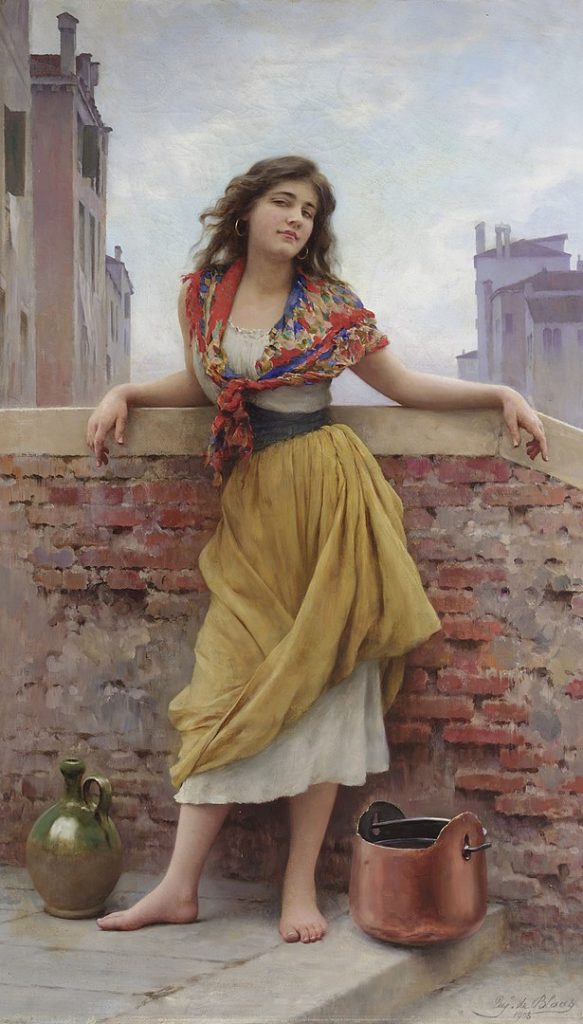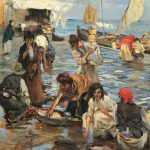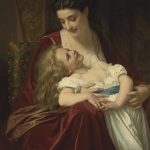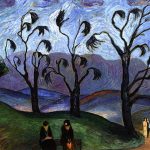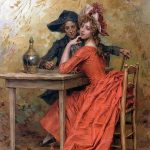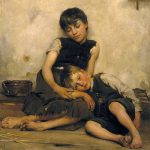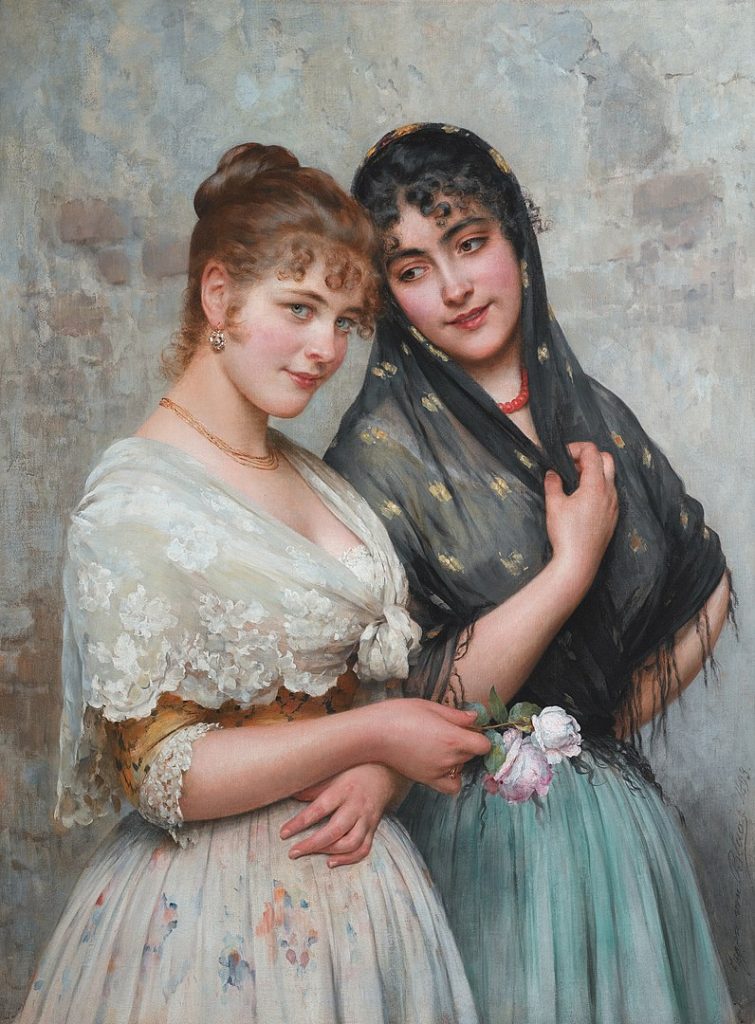
Eugen von Blaas, also known as Eugenio Blaas or Eugenio de Blaas (1843–1931), was an Italian-Austrian painter known for his genre paintings, particularly those depicting scenes of everyday life in Italy. He was associated with the academic art tradition and specialized in portraying beautiful women in various domestic and outdoor settings.
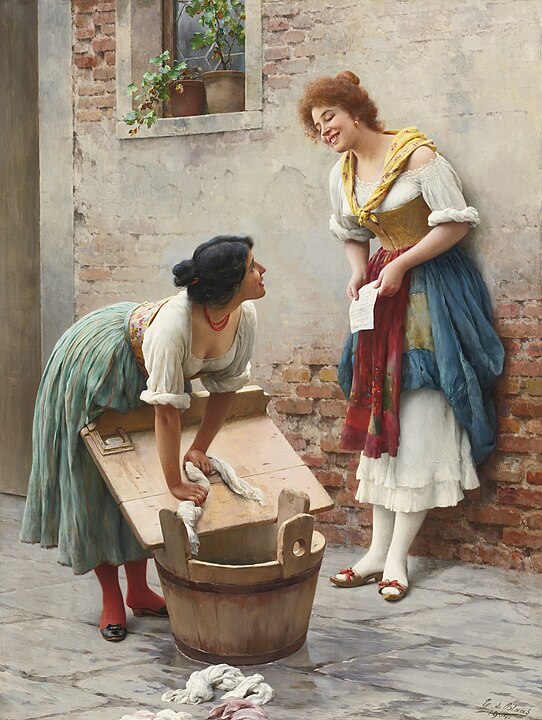
- Early Life and Education: Eugen von Blaas was born in Albano, near Rome, Italy, into a family of artists. He came from a lineage of painters, and his father, Karl von Blaas, was a respected historical painter. Eugen studied art at the Academy of Fine Arts in Venice.
- Genre Painting: Blaas gained recognition for his genre paintings, which often depicted Italian women in elegant and picturesque settings. His works were influenced by the Academic art tradition, characterized by realistic depictions of subjects and a focus on technical skill.
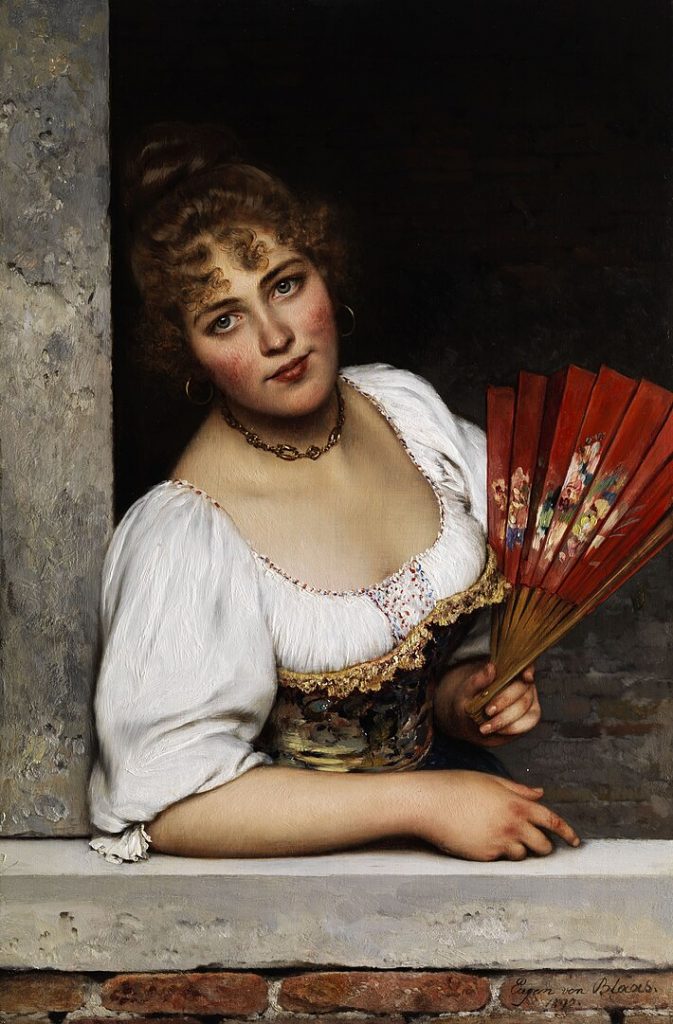
- Subjects and Style: Blaas’ paintings frequently featured young women engaged in daily activities, often in outdoor settings or interiors with a touch of Romanticism. He was known for his skillful rendering of fabrics, textures, and the play of light in his compositions.
- International Success: Blaas achieved international success, especially in the United States and England, where his genre paintings found a market among collectors. His works were exhibited at prestigious venues, including the Royal Academy in London.
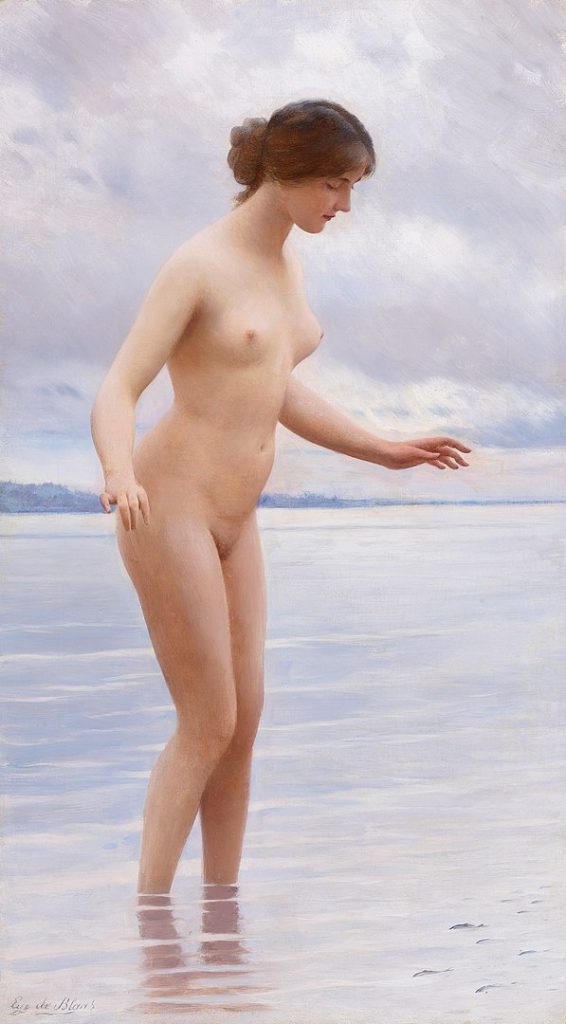
- Venetian School Influence: While Blaas was associated with the Academic art tradition, his works also reflected the influence of the Venetian School. He spent much of his career in Venice, and the city’s rich artistic heritage, including the work of Venetian Renaissance painters, left an imprint on his style.
- Legacy: Eugen von Blaas’ paintings continue to be appreciated for their technical skill and nostalgic portrayal of Italian life in the late 19th and early 20th centuries. His depictions of graceful women in charming settings evoke a sense of romanticized beauty.
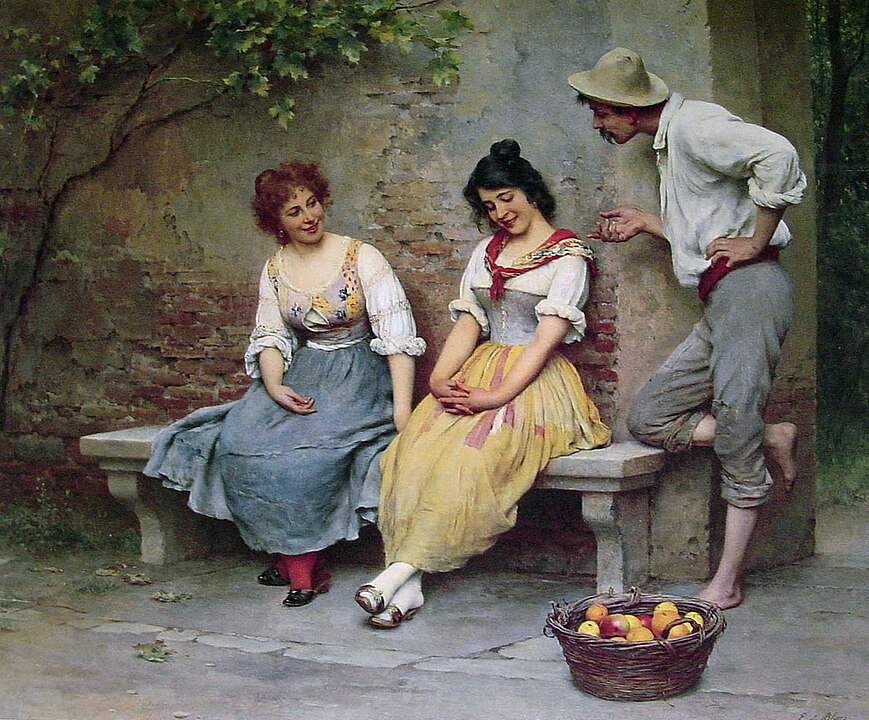
Eugen von Blaas’ art, with its focus on genre scenes and the portrayal of the Italian lifestyle, contributes to the broader conversation about academic art in the late 19th and early 20th centuries. His works can be found in various private collections and museums around the world.
